Key Points and Summary – China’s J-35 is a carrier-borne stealth fighter that has moved from prototype to repeated deck trials on the Fujian, a new flat-deck aircraft carrier with electromagnetic catapults.
-The jet’s design choices—internal weapons bays, stealth-friendly inlets, folding wings, and a modern sensor window—make it a credible “first-look, first-shot” platform.
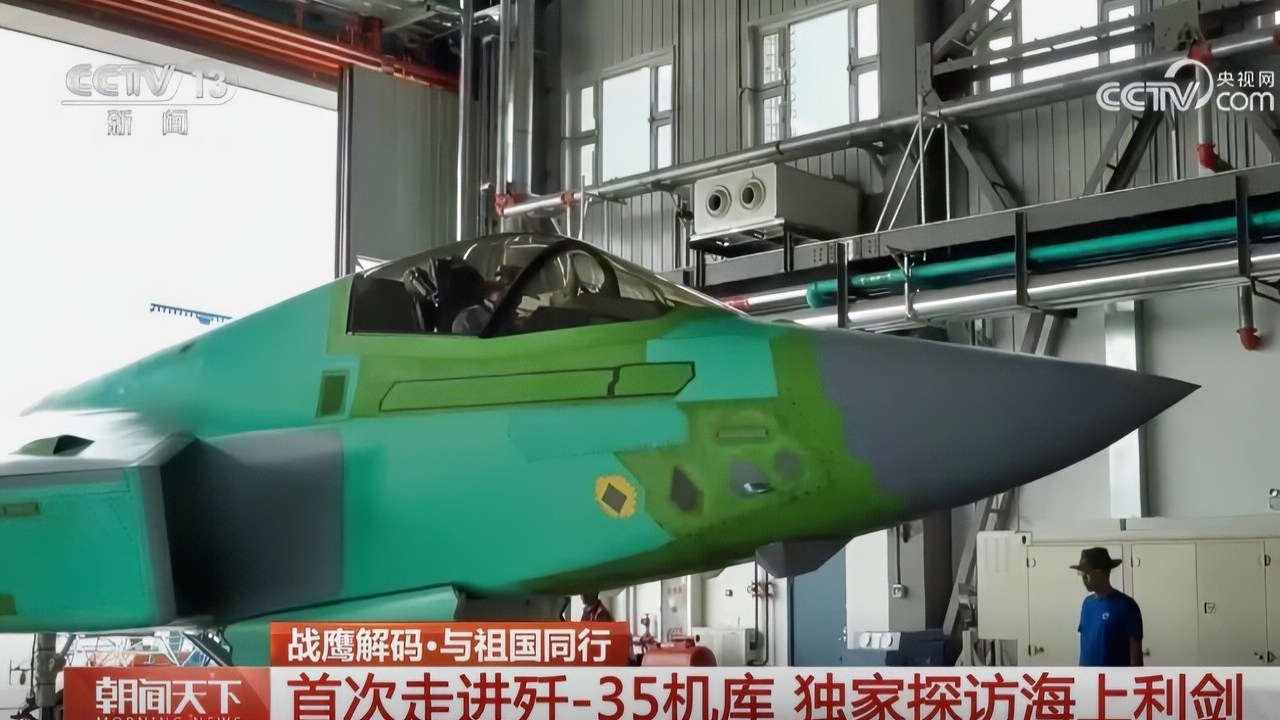
J-35 Factory in China. Image Credit: CCTV Screenshot.
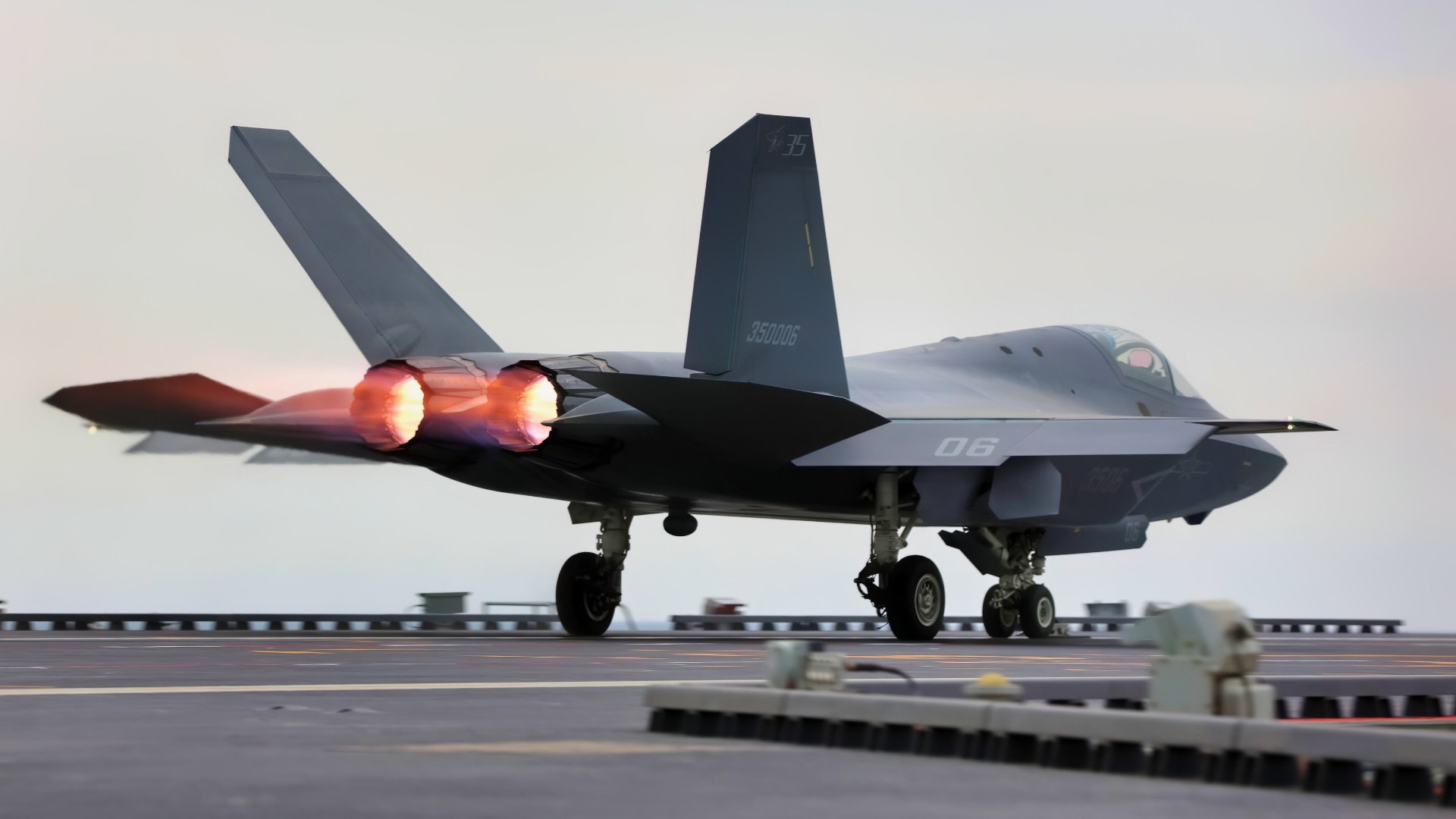
China J-35 Fighter on Aircraft Carrier. Image Credit: Chinese Navy.
-It won’t match the U.S. F-35C in all-around stealth or software maturity, but from the front, with clever tactics and adequate radar support, it’s a formidable opponent.
The result: China’s carriers gain real reach, forcing the U.S. to push operations outward, harden tankers and radar planes, and lean on submarines, electronic warfare, and longer-range weapons.
China’s J-35 Is Turning Its Carriers Into Real Players
If you’ve been told China’s aircraft carriers are “mall parking lots with flight decks,” the last year has been a rude wake-up. At least for me, it has.
Beijing’s new carrier-borne stealth fighter—widely referred to as the J-35—has moved from rumor to repeated deck trials, and the images are hard to dismiss: a low-observable, twin-engine jet shooting off electromagnetic catapults, recovering to the deck, and taxiing past a new airborne early-warning plane.
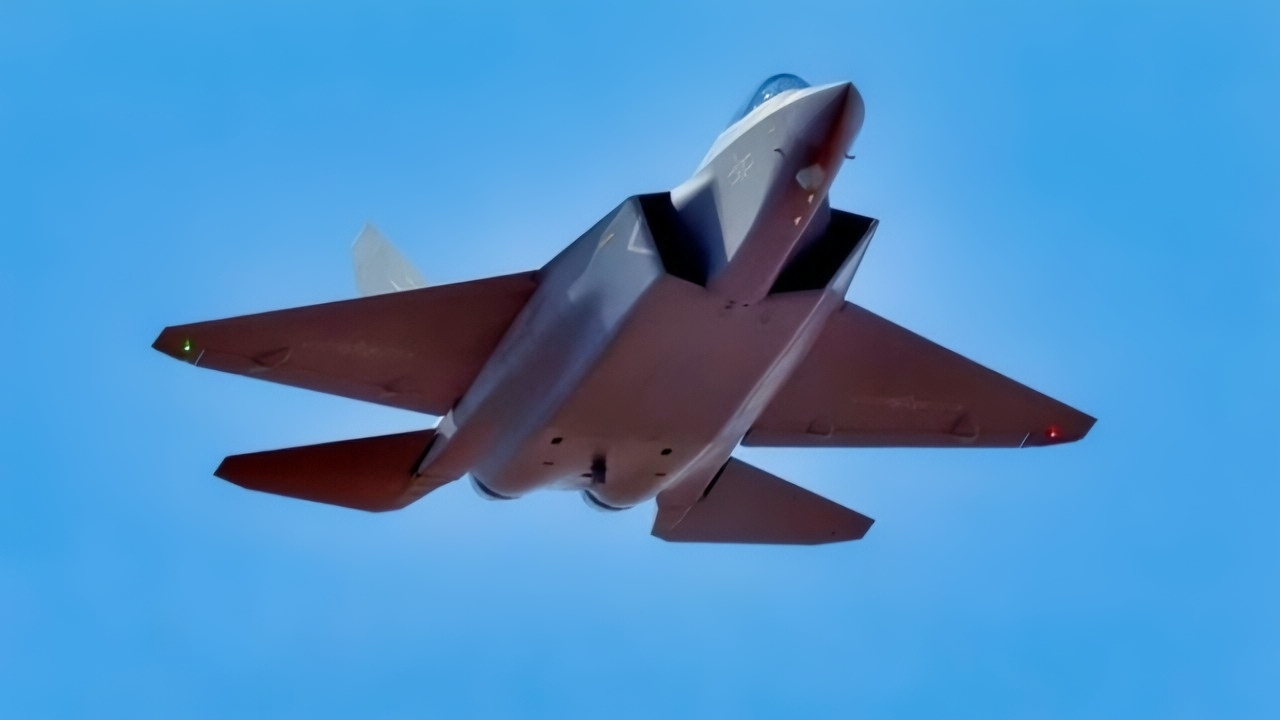
J-35 Fighter from China. Image Credit: PLAAF.

J-35 New Stealth Fighter from China
This isn’t just about a shiny airplane. It’s about how that airplane changes what China’s carriers can do—and how the U.S. has to adjust.
This explainer isn’t meant to be a wonk fest, but to cover what we know. We’ll cover what the J-35 is, how it evolved, how it compares to the U.S. Navy’s F-35C (the carrier variant of the Lightning II), and what it all means for the next crisis at sea.
What the J-35 Actually Is
Think of the J-35 as a stealthy, medium-weight, twin-engine fighter tailored from the start for catapult carriers. “Stealthy” means the designers sculpted the jet’s shape and air intakes, tucked its weapons inside the fuselage instead of under the wings, and paid close attention to seams and edges so radar has less to bounce off. “Twin-engine” signals a bias toward power and safety over water: two powerplants give you margin when you’re far from a runway and carrying a heavy load.
There are familiar touches: the chin-mounted infrared and electro-optical sensor (a window that lets the jet passively spot and track targets), diverterless intakes (curved inlets that smooth airflow and also help stealth), and folding outer wings to fit on a crowded deck. The overall effect is a jet that looks like a cousin to Western fifth-generation fighters, but not a copy.
The jet most often pictured next to it is the F-35C, which is single-engine and purpose-built for carriers. The J-35 won’t match the F-35’s deep stealth across every angle—no one outside China claims that—but it doesn’t need to to be a problem. On a carrier deck, “good enough stealth plus numbers and competent sensors” is a big leap from the non-stealth fighters China operated just a few years ago.
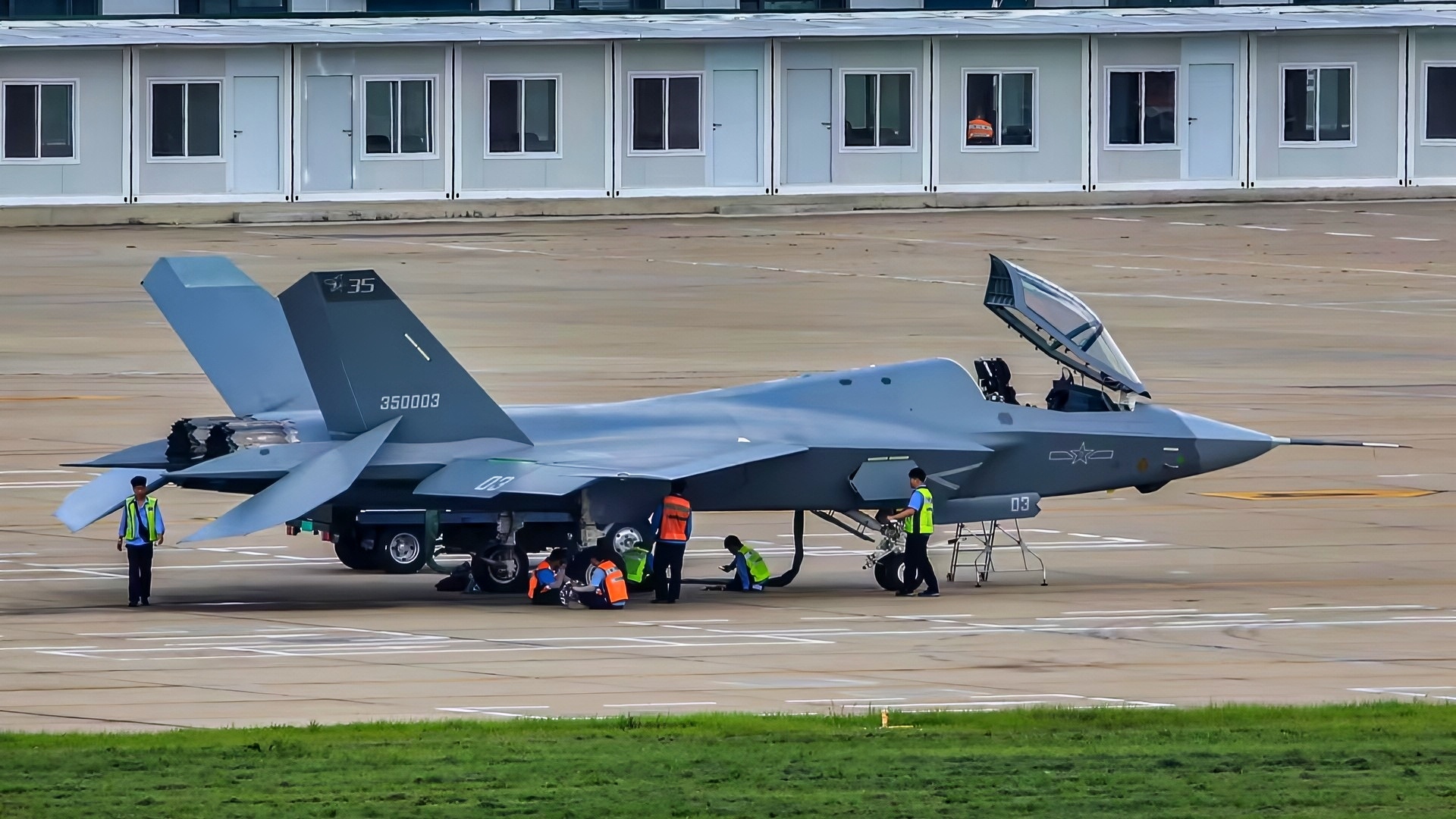
China J-35 Fighter on Runway. Image Credit: PLAAF.

J-35A Fighter Chinese Military. Image Credit: Creative Commons.
The Long Road From Concept to Catapults
The story begins more than a decade ago with a private-venture demonstrator called the FC-31. It flew in 2012, made the airshow rounds, and seemed destined to be a technology testbed. The People’s Liberation Army Navy (China’s navy) then showed deep interest in a naval version as planners looked beyond their ski-jump carriers to the new, flat-deck Fujian, which uses electromagnetic catapults (think: high-tech slingshots that throw aircraft off the deck with precisely controlled force).
2021: The first clearly navalized prototype flew—now with a catapult launch bar, beefed-up landing gear, and folding wings that scream “carrier.”
2022–2024: More prototypes appeared in a naval gray scheme. The jet kept refining panel edges, inlets, and engine nozzles—small details that matter to stealth and reliability.
2025: State media released footage of catapult launches and recoveries at sea from Fujian, not just land test sites. The same decks showed KJ-600 early-warning planes (China’s Hawkeye-like radar aircraft) and upgraded J-15s rolling through the same routines. China didn’t just bolt a new jet to an old ship; it upgraded the entire flight-deck ecosystem.
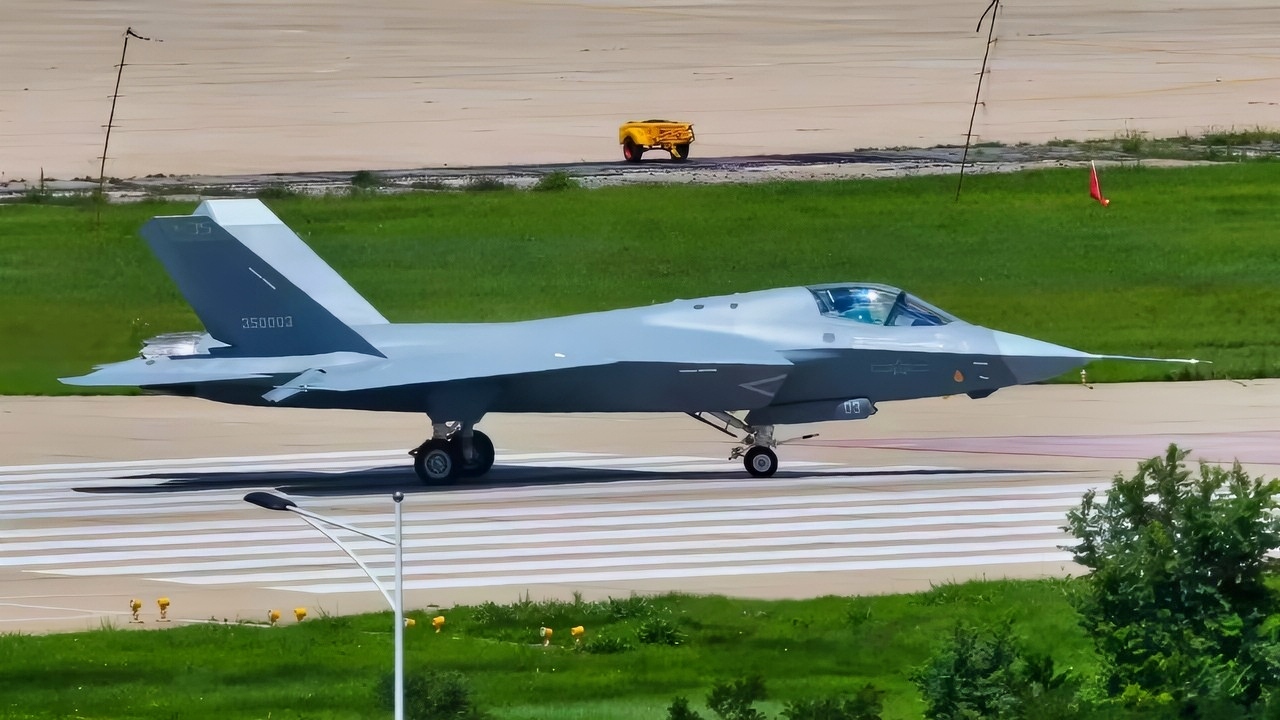
J-35 Fighter X Screenshot. Image Credit: X Screen Capture.

J-35 Stealth Fighter from China. Image Credit: Creative Commons.
All of this took place while China was also improving engines—initially relying on interim powerplants and now flight-testing higher-thrust options. The precise engine model matters less than the fact that the program is moving and the jets are flying from a carrier. That was the missing piece.
Why This Changes The Carrier Math
China’s first two carriers launched planes via a “ski-jump” ramp. It works, but it limits how heavy (fuel, weapons) an aircraft can be at takeoff. Catapults almost flip that script: they let you launch heavier jets with more fuel and bigger weapons in hotter weather and rougher seas. Combine that with a stealth fighter and a deck-based radar plane (the KJ-600), and you go from a “starter carrier” to an air wing that can detect farther and strike farther.
Three practical changes follow:
Reach. A stealthy jet with more gas at launch can push patrol lines outward and still have time on station. That matters in the Western Pacific’s vast distances.
First look, first shot. Stealth fighters paired with a modern radar plane give a carrier group a better picture of the air and sea around them. Seeing first is everything.
Demand on U.S. escorts. U.S. ships and aircraft now have to plan for Chinese carriers that can generate sorties and press the fight, not just posture. That pulls U.S. destroyers, submarines, and aircraft into different formations and ranges.
J-35 vs. F-35C: What’s Fair to Say
The internet loves “who wins?” matchups. And, heck, we do a lot of them right here on National Security Journal. Real life is messier, but here’s a grounded comparison:
Stealth: The F-35C is the gold standard for carrier aircraft. Its shaping, edge alignment, and coatings are the result of decades of U.S. work, obsessive testing, and expensive lessons. The J-35 likely doesn’t equal that all-aspect stealth, especially from the side and rear. But from the front, and with smart tactics, it can be stealthy enough to complicate detection and increase surprise.
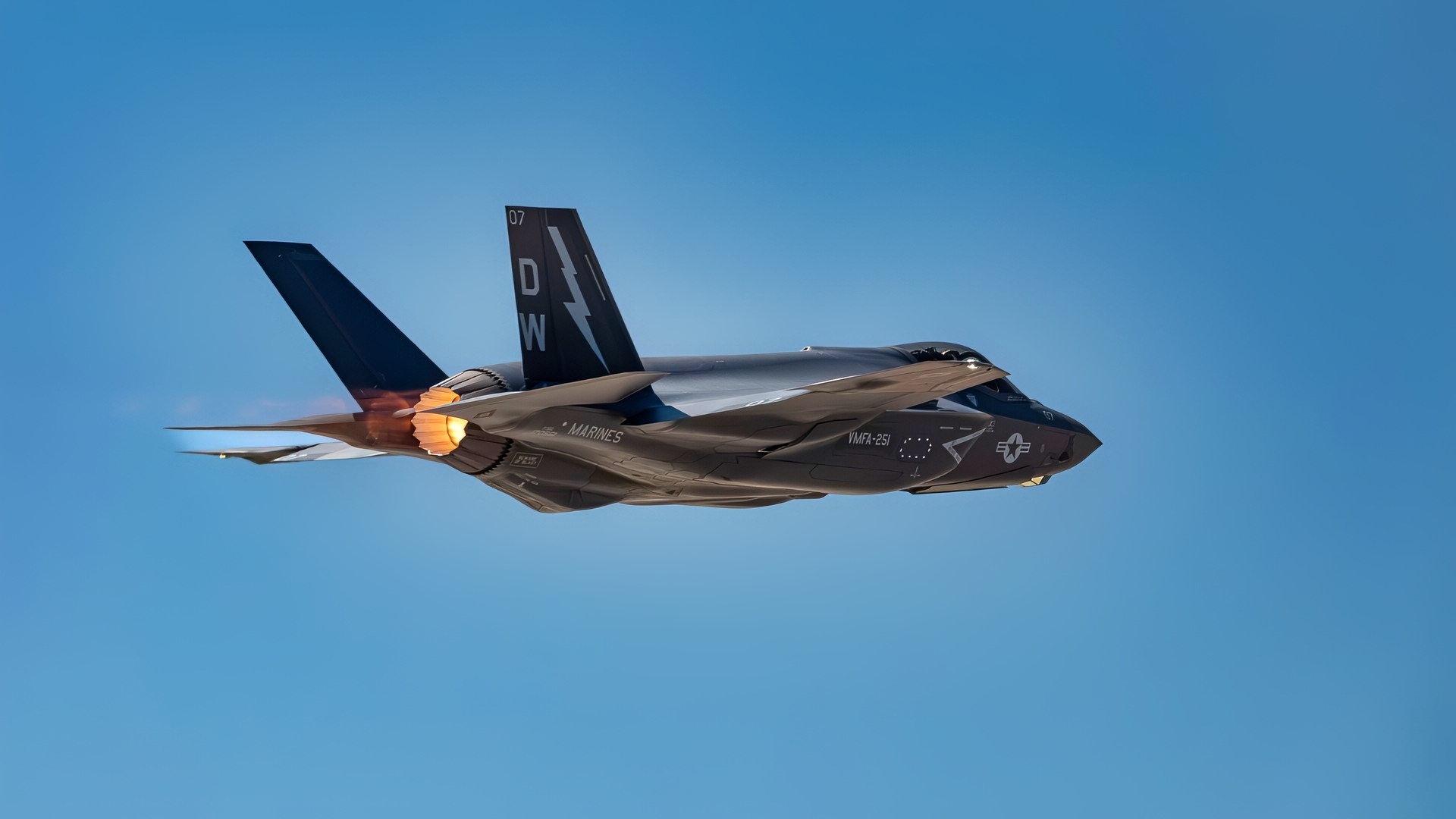
A U.S. Marine Corps F-35C Lightning II assigned to Marine Fighter Attack Squadron 251 (VMFA-251), Marine Corps Air Station Cherry Point, North Carolina, takes off for a mission in support of Red Flag-Nellis Marine Fighter Attack Squadron 251 (VMFA-251), 2nd Marine Aircraft Wing, Marine Corps Air Station Cherry Point, North Carolina 25-3 from Nellis Air Force Base, Nevada, July 22, 2025. Red Flag, strengthens join-force readiness through integration in realistic combat scenarios, enhancing interoperability and rapid-response capabilities. (U.S. Air Force photo by William R. Lewis)
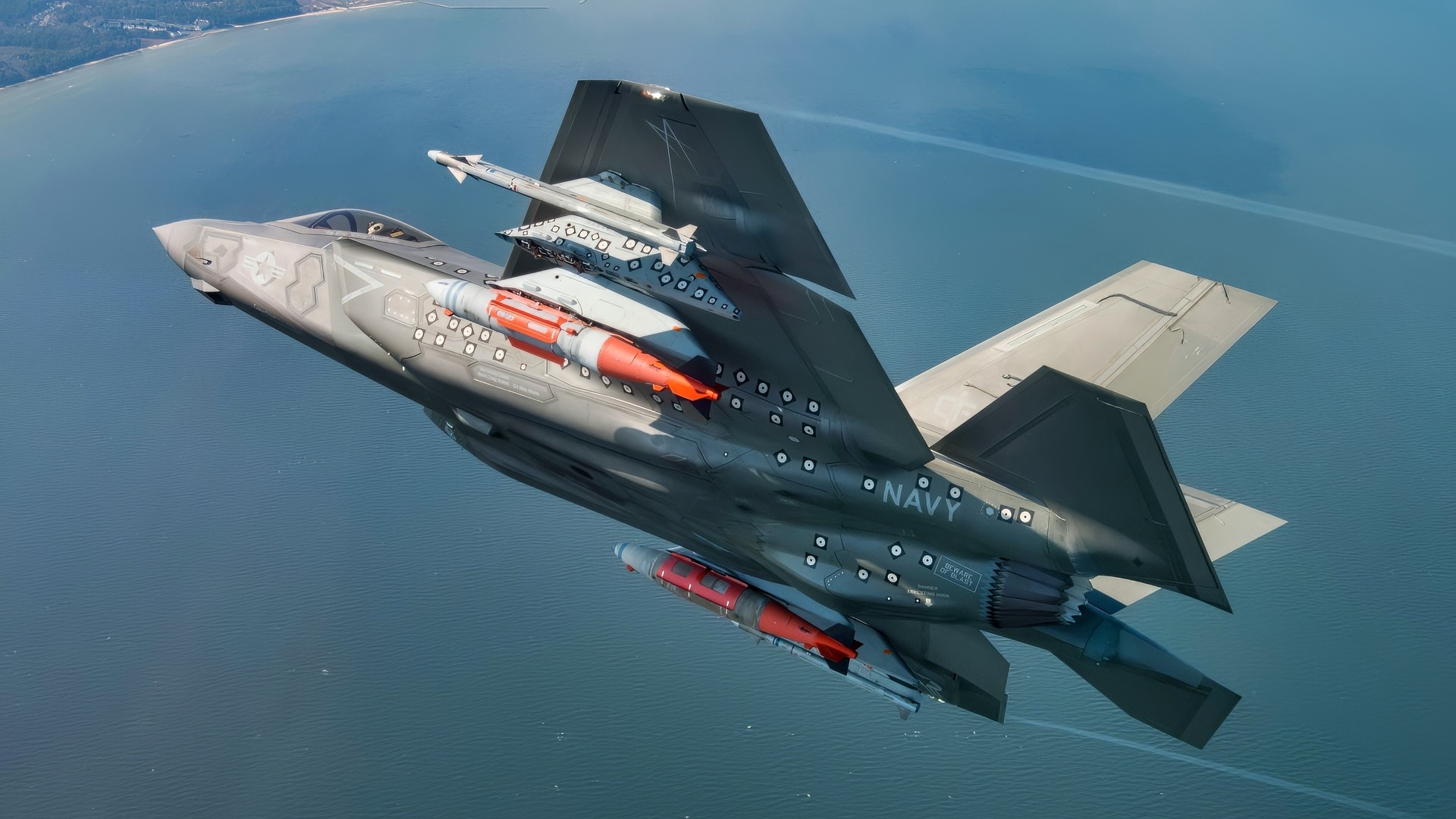
The final SDD Test flight CF-2 Flt 596 was piloted by BAE Test pilot Peter Wilson, April 11, 2018, from the F-35 Pax River Integrated Test Force. The F-35C completed a mission to collect loads data while carrying external 2,000-pound GBU-31 Joint Direct Attack Munitions (JDAM) and AIM-9X Sidewinder heat-seeking missiles. (Photo courtesy of Lockheed Martin)
Engines and kinematics: The J-35’s twin engines can offer better thrust margin for catapult takeoffs, high-altitude dash, and lugging heavy loads off the boat. The F-35C’s single engine is immensely powerful and extremely reliable, but two is still two when you care about over-water safety and acceleration.
Sensors and data fusion: The F-35’s sensor fusion—the way it blends radar, infrared, electronic sniffers, and off-board data into a clean picture—is its superpower. It has years of software updates and combat usage behind it. The J-35 is newer and still maturing. China will close gaps fast, but software ecosystems and training pipelines take time to harden.
Pilot training and deck ops: The U.S. Navy has generations of carrier experience, standardized procedures, and a global logistics web. China is learning fast, but they are still learning—how to maintain tempo, how to fly night cycles, how to recover jets in bad weather. Skill curve matters.
The takeaway isn’t “F-35C wins” or “J-35 wins.” It’s this: China now has a low-observable jet that makes its carrier air wings real threats, not just regional photo ops. That alone reshapes the board.
How The U.S. Should Adjust to the J-35
It’s tempting to answer “new Chinese fighter” with “more of our own fighters.” Some of that is necessary. But the smarter response is about spacing, sensing, and salvos:
Push the fight outward. Keep U.S. carriers and high-value tankers farther from China’s coasts. That means heavier use of long-range weapons, smarter refueling plans, and unmanned aircraft that extend the F-35C’s reach without dragging the ship into missile traps.
Starve the other side’s picture. The J-35 becomes dangerous when it’s part of a tight “kill chain” that finds, tracks, and cues weapons. Break that chain with electronic warfare, decoys, cyber disruption, and old-fashioned emissions control. If their air wing can’t see clearly, it can’t shoot confidently.
Make the ocean opaque again. Submarines remain the best way to stalk carriers. More patrols in the right sea lanes, backed by seabed sensors and cueing from space, raises the cost of Chinese carrier ops day to day.
Harden the everyday targets. The J-35 isn’t just for dogfights. It threatens the tankers and radar planes U.S. forces rely on. Disperse them, protect them with escorts, and field more survivable stand-ins where we can.
None of this is exotic. It’s a mindset shift: treat Chinese carrier groups as credible, and plan like they will be present early in a crisis—not as a last-act arrival.
The J-35 In 1 Word: Evolution
Programs that reach the deck rarely stall. Expect:
Engines with more thrust and fuel efficiency, allowing heavier weapon loads and longer unrefueled patrols.
Better coatings and manufacturing tolerances that quietly improve stealth, especially from the sides.
Software upgrades that sharpen sensor fusion and add new weapons—air-to-air missiles with longer reach and anti-ship weapons launched from safer distances.
New carriers, built with catapults from the start, so the J-35 isn’t limited to one ship. That’s how you turn capability into capacity.
The U.S. and allies will counter in parallel—more E-2D radar planes on patrol, more F-35Cs at sea, and longer-legged missiles that let patrol lines stay safely away from the densest threat rings. The race becomes who adapts faster rather than who has the single “best” jet.
A Plain Bottom Line
For years, it was fashionable to wave away Chinese carriers as showpieces. The J-35 changes that conversation. It won’t erase the U.S. Navy’s advantages in pilot experience, software maturity, or global logistics. But it does give China a true first-look, first-shot fighter on a deck that can launch it heavy and often. That combination turns China’s carriers from symbols into tools.
If you worry about great-power competition, that’s sobering. If you worry about stability, it’s also clarifying. When both sides know the other can reach, see, and strike, the day-to-day incentives tilt toward caution.
Deterrence is stronger when the other team’s punch is real—and the J-35 makes China’s punch at sea real.
About the Author: Harry J. Kazianis
Harry J. Kazianis (@Grecianformula) is Editor-In-Chief and President of National Security Journal. He was the former Senior Director of National Security Affairs at the Center for the National Interest (CFTNI), a foreign policy think tank founded by Richard Nixon based in Washington, DC. Harry has over a decade of experience in think tanks and national security publishing. His ideas have been published in the NY Times, The Washington Post, The Wall Street Journal, CNN, and many other outlets worldwide. He has held positions at CSIS, the Heritage Foundation, the University of Nottingham, and several other institutions related to national security research and studies. He is the former Executive Editor of the National Interest and the Diplomat. He holds a Master’s degree focusing on international affairs from Harvard University.
More Military
China Has a Three-Word-Plan to Sink Aircraft Carriers
The Sneaky Reason China Wants a Big Fleet of Aircraft Carriers
USS Kentucky: The ‘Lost’ U.S. Navy Iowa-Class Battleship That Was Never Finished
China’s J-20 Stealth Fighter Simply Summed Up In Just 1 Word
F-22 Raptor vs. China’s New J-35 Fighter: Why You Might Not Like the Answer


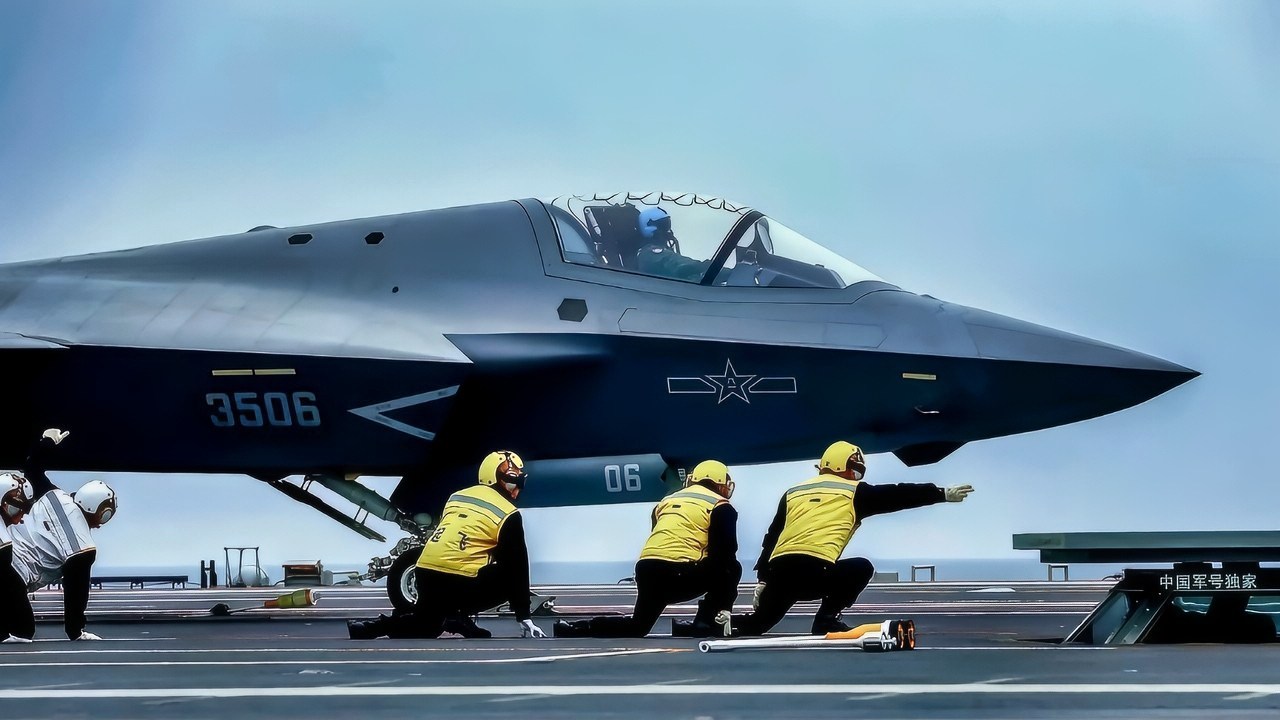








USAF
October 13, 2025 at 12:08 pm
Chinese Jets are crap we can see them a lot further away than they can see us if at all! Chinese inferior radar, coatings and engine tech far behind the US.
China is more of a gimmick nothing much to worry about.